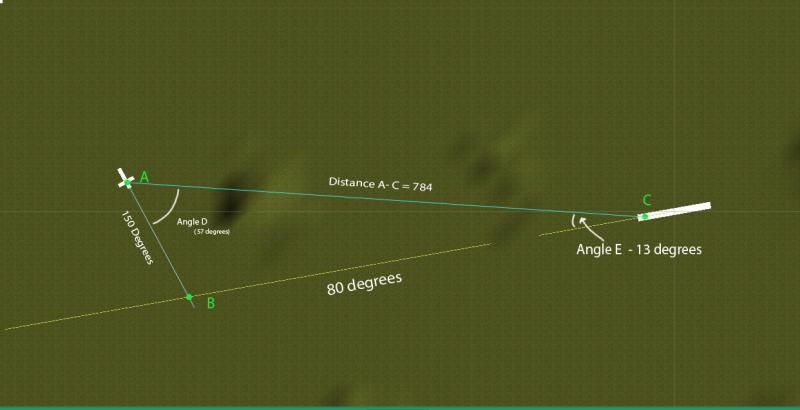You are using an out of date browser. It may not display this or other websites correctly.
You should upgrade or use an alternative browser.
You should upgrade or use an alternative browser.
One for trigonometry gurus here
- Thread starter dal
- Start date
More options
Thread starter's postsOf course it is

(Just haven't had to do this for 30 years so I will have to think about it)
What is the back ground picture
(That is much more interesting!)
Background picture is a screen shotr from a air traffic control game I'm making. The yellow line is in line with the runway centre line.
@ bitslice - how did u get those figures
It'll be the sine rule. Really easy to use. Just 3 ratios that must be equal.
It'll be the sine rule. Really easy to use. Just 3 ratios that must be equal.
Cheers ill get reading
Background picture is a screen shotr from a air traffic control game I'm making. The yellow line is in line with the runway centre line.
@ bitslice - how did u get those figures
Aw Shute!
And there was I thinking this was some sort of google earth finding Genghis Khans tomb thing!

Odd, just tried the sine rule and got different figures from my first go.
What we need are some Economic students to give us a clue
Well I'm economics graduate.
I'd only give you different answers if the angles keep changing

Not sure how Bitslice got 878 for B-C when it's obviously shorter than A-C
A-B - 209.2
B-C - 780.0
To 1 decimal place.
For my ease as it's the way I sketched it out and labelled it. Sorry.... May not help that much. It's essentially flipped horizontally. Wasn't paying that much attention.
It's the Law of Sines, and because you know the angles and one of the side you can jump straight into the equations needed.
Angles
13° = A
110° = B
57° = C
Sides
AB = a
AC = b = 874
BC = c
You know A B and C and b
So, to get side c
To get side a
And now... I'm off to bed as this has brought back painful A-Level memories.
A-B - 209.2
B-C - 780.0
To 1 decimal place.
For my ease as it's the way I sketched it out and labelled it. Sorry.... May not help that much. It's essentially flipped horizontally. Wasn't paying that much attention.
It's the Law of Sines, and because you know the angles and one of the side you can jump straight into the equations needed.
Code:
bsinA
a= ---------
sinB
csinA
a= ---------
sinC
asinB
b= ---------
sinA
csinB
b= ---------
sinC
asinC
c= ---------
sinA
bsinC
c= ---------
sinBAngles
13° = A
110° = B
57° = C
Sides
AB = a
AC = b = 874
BC = c
You know A B and C and b
So, to get side c
Code:
bsinC
c= -------
sinB
874sin(57°)
c= -----------
sin(110°)
c= 780.04026To get side a
Code:
bsinA
a= ---------
sinB
874sin(13°)
a= ----------
sin(110°)
a= 209.225035And now... I'm off to bed as this has brought back painful A-Level memories.
Man of Honour
- Joined
- 1 Aug 2004
- Posts
- 12,681
- Location
- Tyneside
Soldato
- Joined
- 15 Feb 2012
- Posts
- 3,308
- Location
- 2
You need a right-angled triangle for sin, cos, and tan to work. Drop a line from point B that hits line AC at a right angle. You then have two right-angled triangles whose angles you know. Then set up some simultaneous equations for one of the triangles and solve them for the length of the common side (the one we made). Calc the rest from trig identities.



